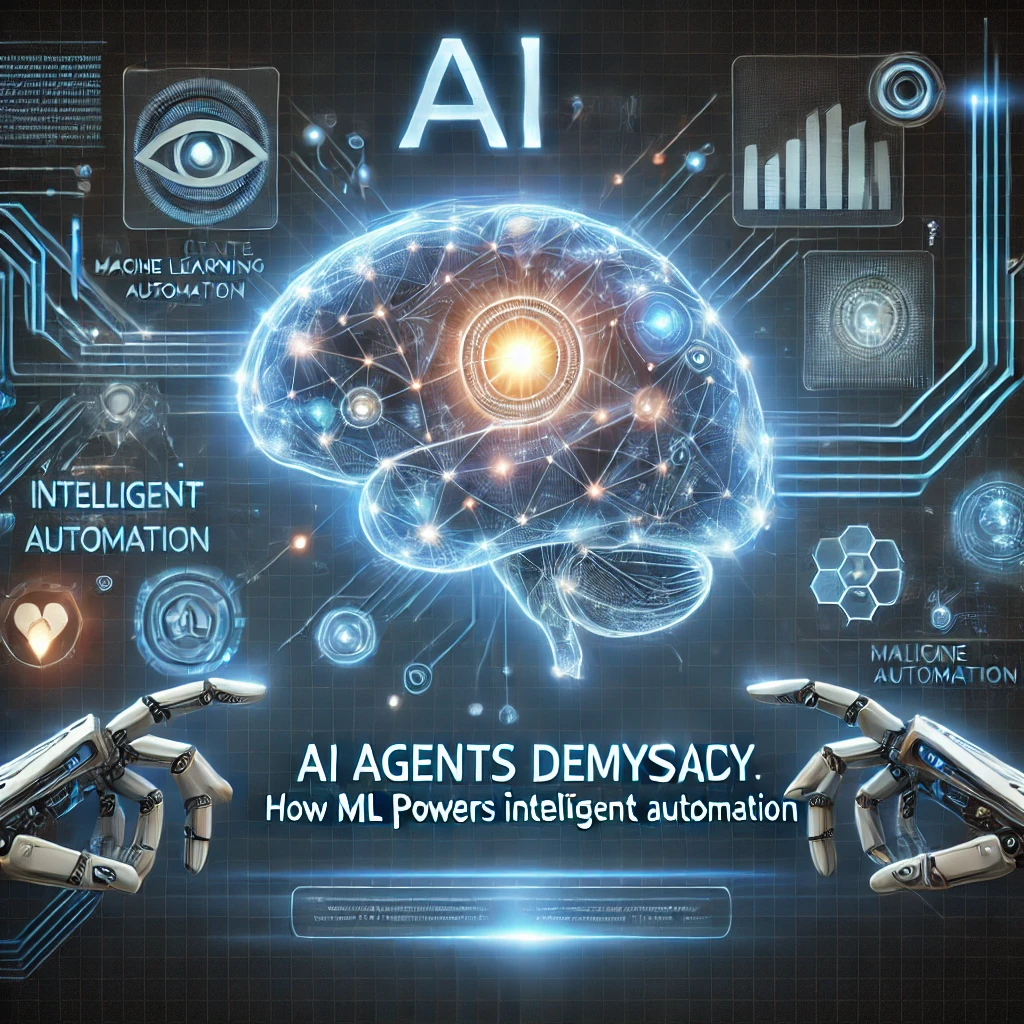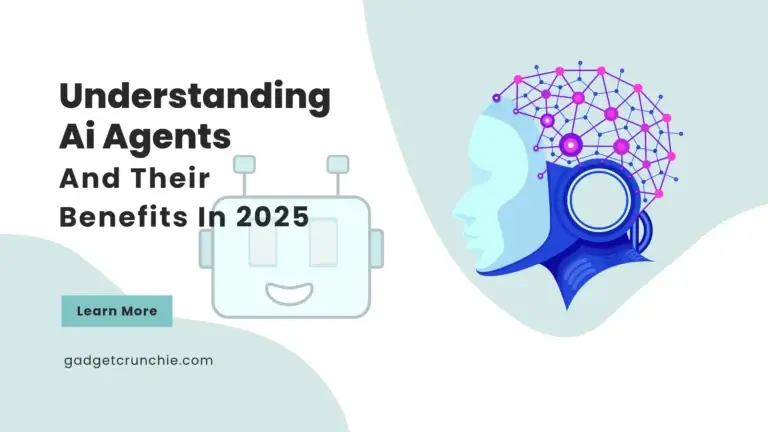AI Agents Demystified
(A Deep Dive into AI Agent Architectures and Learning Mechanisms)

Introduction
In our previous guide, we explored the basics of AI agents—smart programs that perceive, decide, and act autonomously. Now, let’s peel back the layers and examine how these agents actually work under the hood.
This post will cover:
- The core architectures of AI agents
- How machine learning (ML) trains them
- Real-world examples with technical insights
- Challenges and future advancements
By the end, you’ll understand not just what AI agents do, but how they do it.
The Building Blocks of AI Agents
Every AI agent operates using three fundamental components:
1. Sensors (Input Channels)
- Function: Collect data from the environment
- Examples:
- Text input (chatbots)
- Voice recognition (Siri/Alexa)
- Camera feeds (self-driving cars)
- API data (stock trading bots)
2. Processing Engine (The “Brain”)
This is where machine learning models analyze inputs and make decisions. Key techniques include:
| Technique | Role in AI Agents | Example |
|---|---|---|
| Rule-Based Systems | Follow pre-programmed logic | Basic chatbots (e.g., 2000s-era customer service bots) |
| Machine Learning (ML) | Learn patterns from data | Spam filters improving over time |
| Deep Learning | Handle complex data (images, speech) | Facial recognition in smartphones |
| Reinforcement Learning | Learn through trial-and-error | AlphaGo mastering board games |
3. Actuators (Output Mechanisms)
- Function: Execute decisions
- Examples:
- Text responses (ChatGPT)
- Physical movements (robot arms)
- API calls (automating spreadsheet updates)
How Machine Learning Trains AI Agents
The magic happens in the training phase. Here’s how it works:
1. Supervised Learning (For Predictions)
- Process: The AI learns from labeled datasets (input-output pairs).
- Agent Example: Email spam filters trained on millions of “spam/not spam” examples.
- Math Behind It: Adjusts weights in neural networks to minimize prediction errors.
2. Unsupervised Learning (For Pattern Detection)
- Process: Finds hidden structures in unlabeled data.
- Agent Example: Amazon’s “Customers who bought this also bought…” recommender.
- Key Algorithm: Clustering (e.g., k-means).
3. Reinforcement Learning (For Sequential Decision-Making)
- Process: The agent learns by receiving rewards/punishments.
- Agent Example: Tesla’s self-driving AI rewarded for smooth lane changes.
- Key Concept: Q-learning (optimizing action-value functions).
Pro Tip: Most advanced agents (like ChatGPT) use hybrid approaches. For instance:
- GPT-4 was pre-trained via unsupervised learning on vast text data
- Then fine-tuned with supervised learning on human feedback
Read more articles related Ai Agents here.
Inside Popular AI Agents: Technical Case Studies
Case 1: ChatGPT (Large Language Model Agent)
- Architecture: Transformer neural network
- Training Data: 570GB+ of text (books, websites, etc.)
- Special Sauce: Uses “attention mechanisms” to weigh word importance
- Limitation: Can hallucinate facts (no true understanding)
Case 2: Roomba (Physical Cleaning Agent)
- Sensors: Bump sensors, dirt detectors, camera (in newer models)
- Decision Algorithm: Simultaneous Localization and Mapping (SLAM)
- Learning: Adapts cleaning paths based on home layout over time
Watch video content on technology to click here.
Case 3: High-Frequency Trading Bots
- Inputs: Real-time market data feeds
- ML Model: Time-series forecasting (LSTM networks)
- Action Speed: Makes trades in microseconds
Challenges in AI Agent Development
Despite advancements, key hurdles remain:
| Challenge | Impact | Current Solutions |
|---|---|---|
| Data Hunger | Requires massive datasets | Synthetic data generation |
| Explainability | “Black box” decisions | SHAP values, LIME techniques |
| Bias Amplification | Learns societal biases | Debiasing algorithms |
| Catastrophic Forgetting | Overwrites old knowledge | Elastic Weight Consolidation |
The Cutting Edge: Where AI Agents Are Headed
- Multimodal Agents
- Combine text, vision, and sound (e.g., GPT-4V analyzing images+text)
- Agent Swarms
- Multiple agents collaborating (e.g., drone fleets for search/rescue)
- Self-Improving Systems
- AI that builds better AI (AutoML, like Google’s AlphaDev)
- Embodied AI
- Agents in physical bodies (Tesla Optimus robot)
FAQs AI Agents Demystified
1. How does machine learning enable AI Agents to power intelligent automation?
Machine learning (ML) gives AI Agents the ability to learn from data, recognize patterns, and make decisions without explicit programming. Through techniques like deep learning and reinforcement learning, these agents automate complex tasks—from processing customer service requests to optimizing supply chains—while continuously improving their performance over time.
2. What’s the difference between traditional automation and AI-powered automation?
Traditional automation follows rigid, rule-based scripts (e.g., basic macros), while AI-powered automation uses ML to adapt dynamically. AI Agents handle unstructured data (like emails or images), predict outcomes, and even make judgment calls—enabling smarter, more flexible solutions like personalized recommendations or predictive maintenance.
3. Can small businesses benefit from AI Agents, or is this just for large enterprises?
Absolutely! AI Agents are scalable—tools like chatbots (Drift, Zendesk), ML-driven analytics (Google Analytics AI), and automated marketing platforms (HubSpot) make intelligent automation accessible. Small businesses use them to streamline operations, reduce costs, and compete with larger players.
Key Takeaways
🔧 AI agents = Sensors + ML Brain + Actuators
📚 Training methods vary by task (supervised/unsupervised/RL)
⚡ Real-world agents use specialized architectures
⚠️ Bias, explainability, and data needs remain challenges
🚀 Future agents will be more multimodal and autonomous



